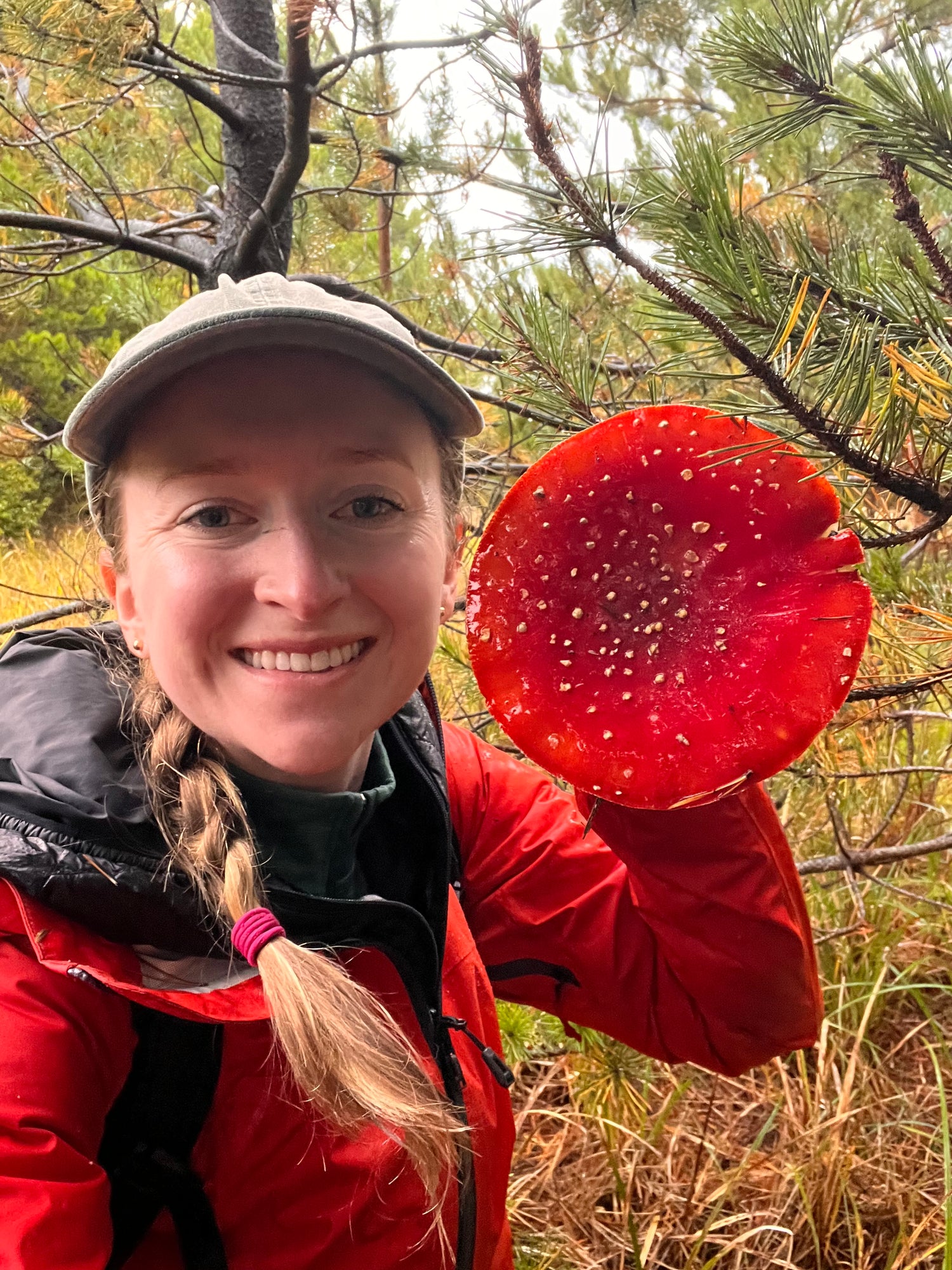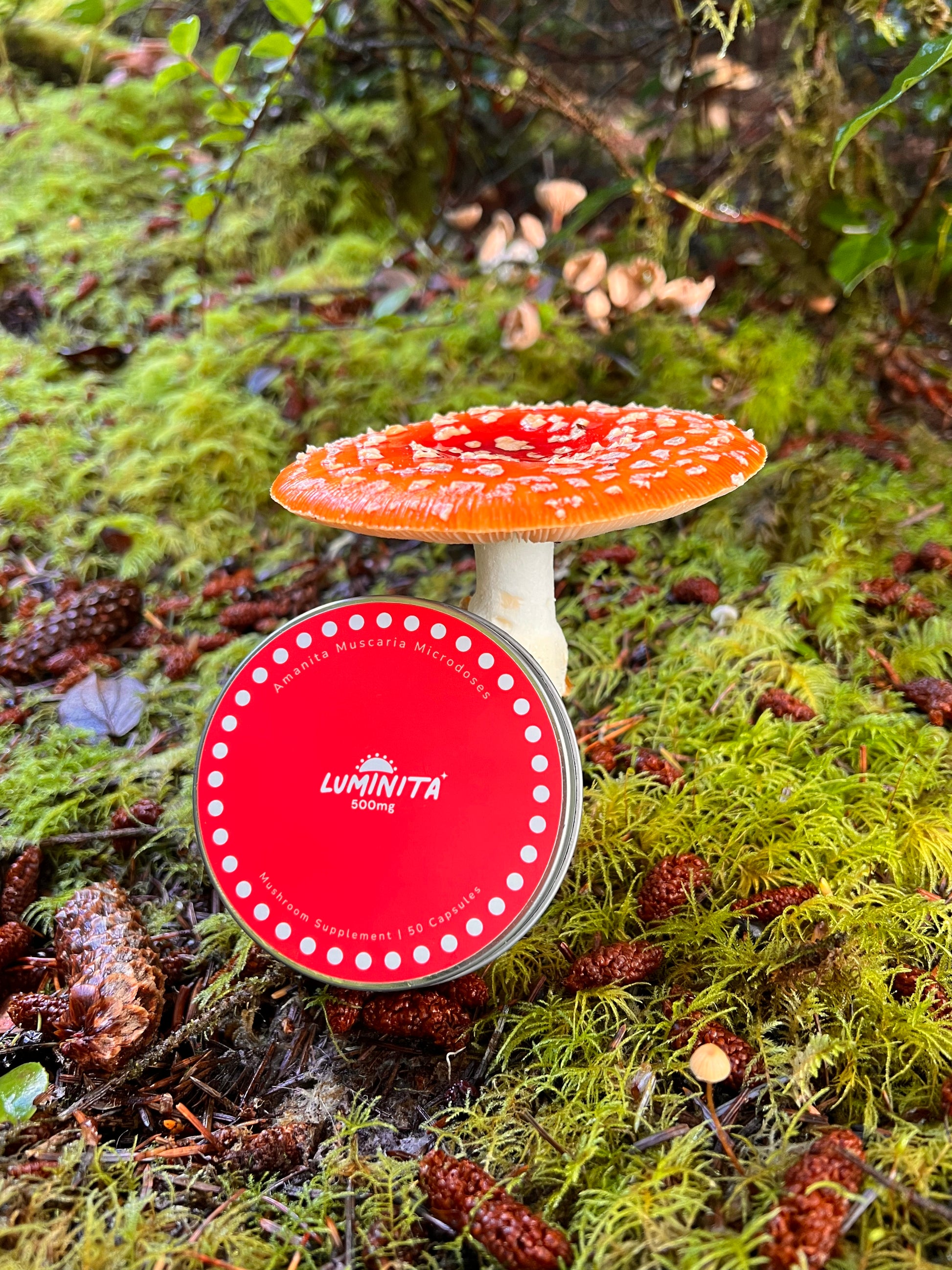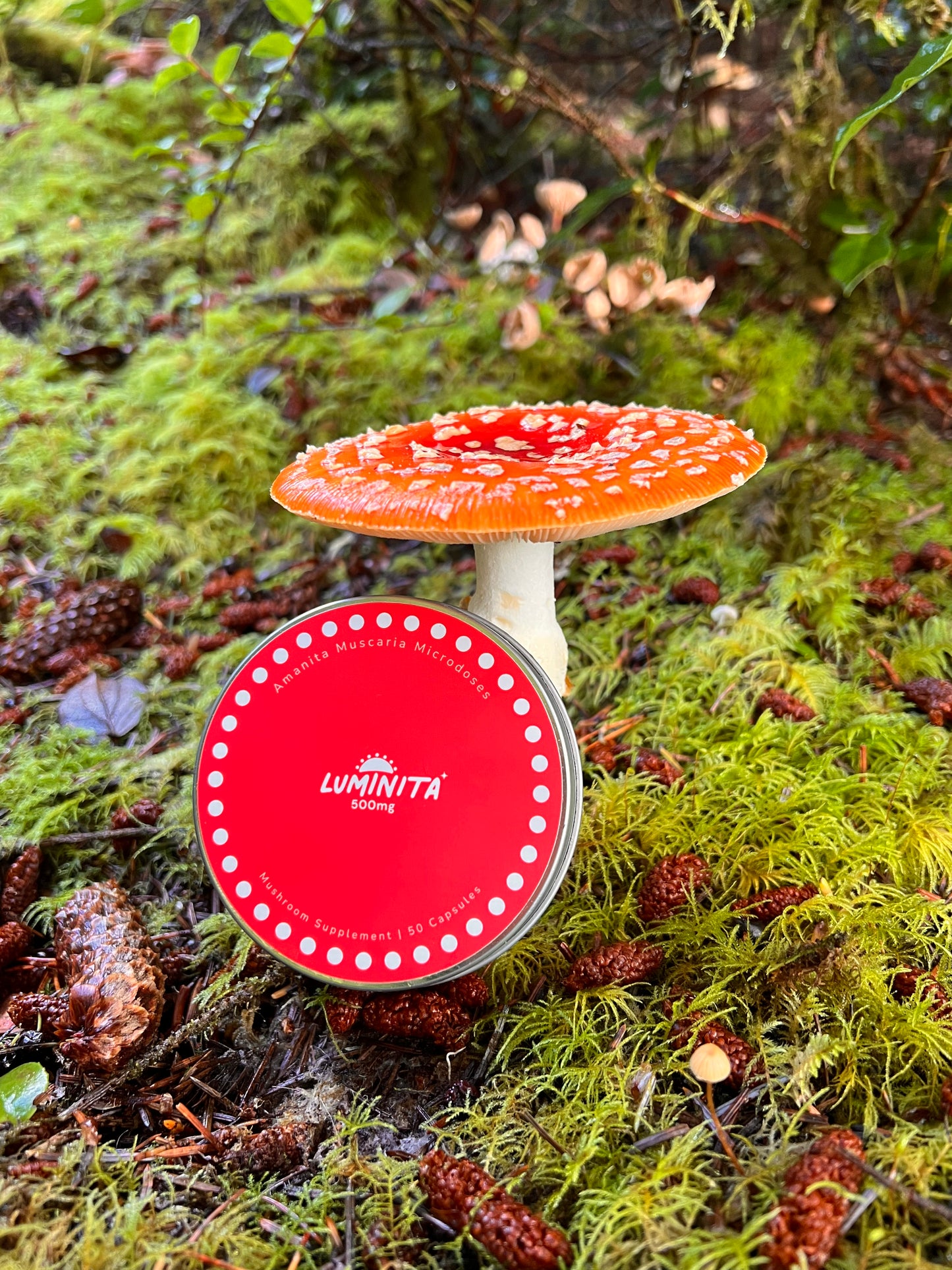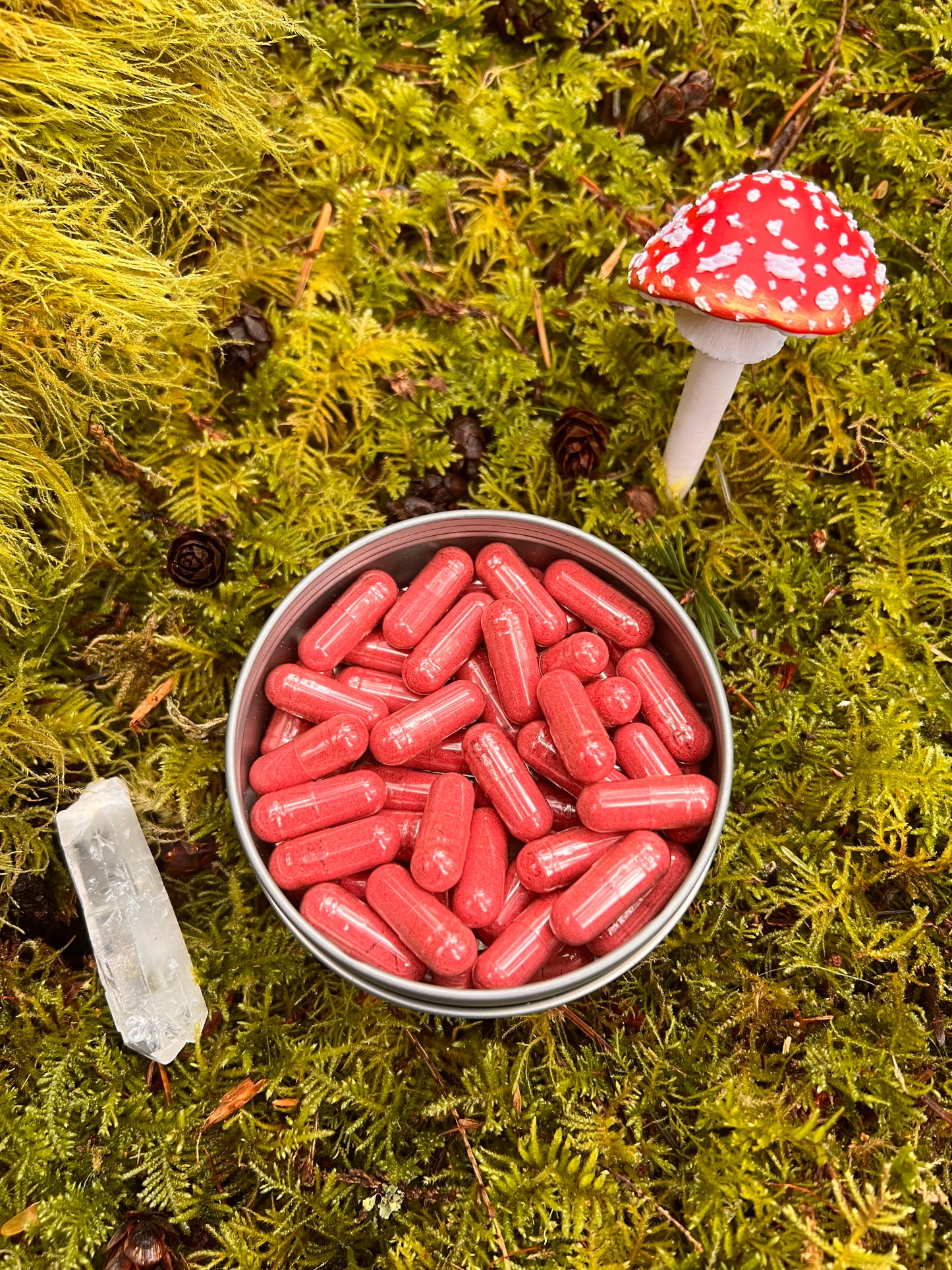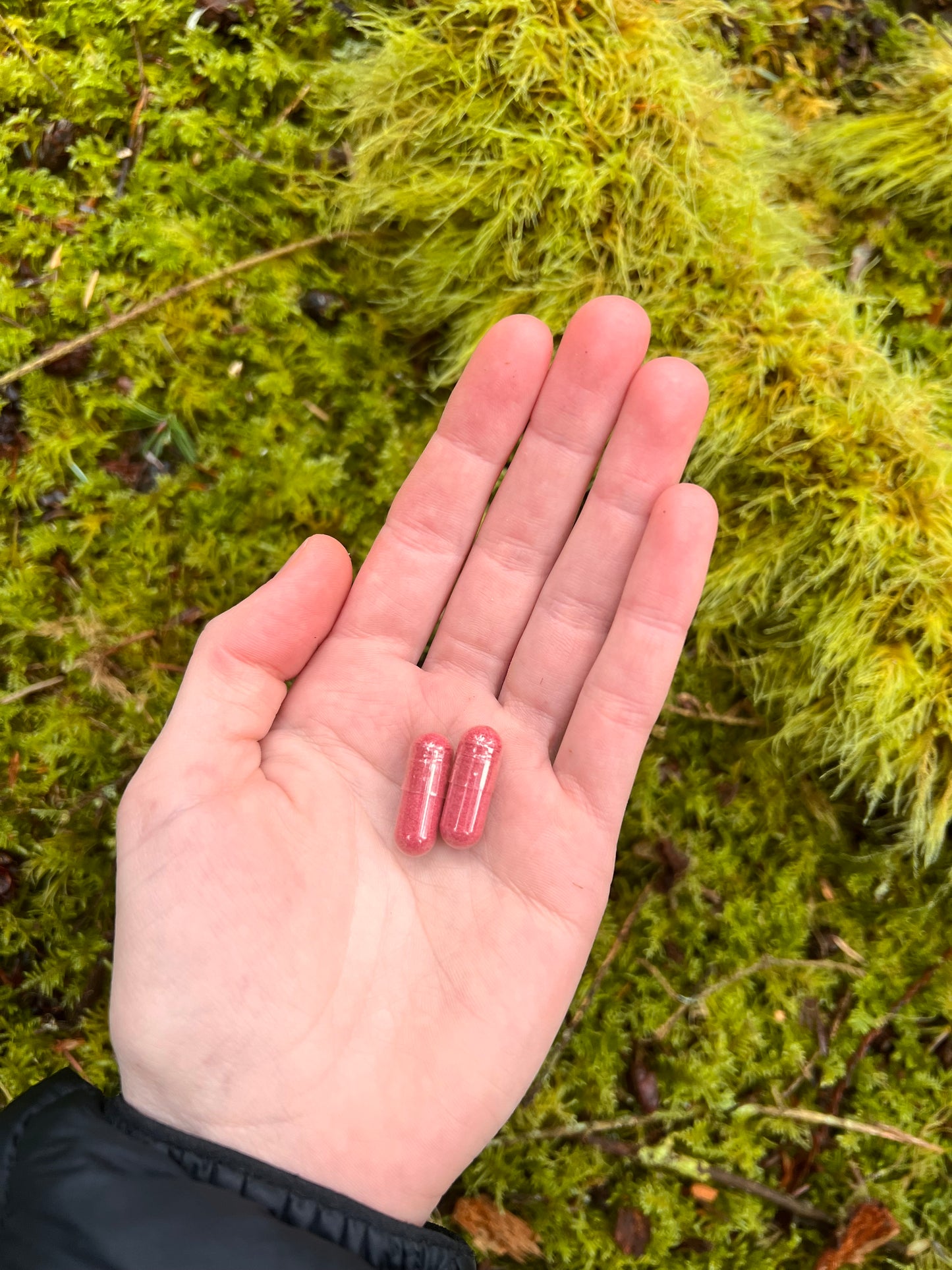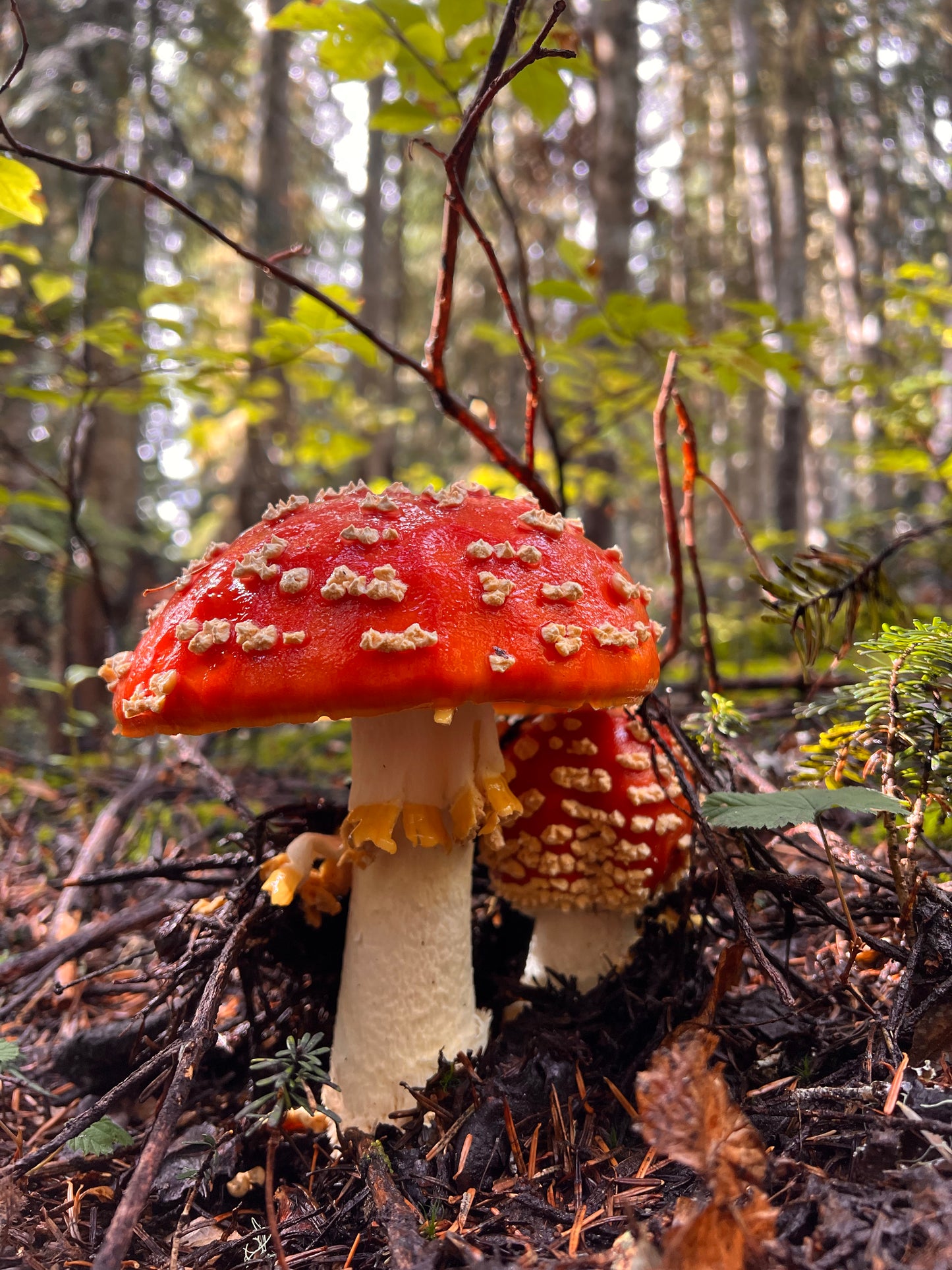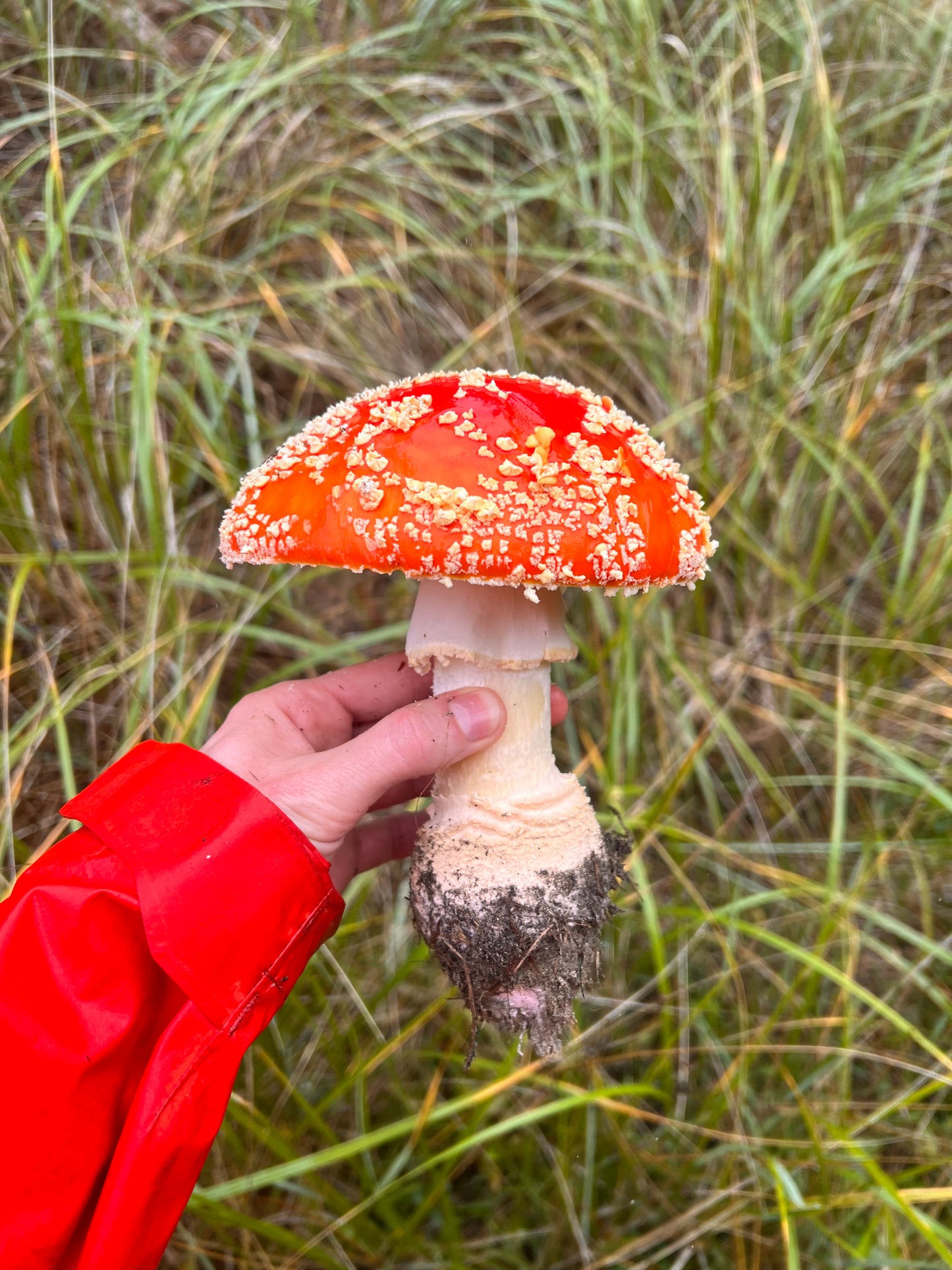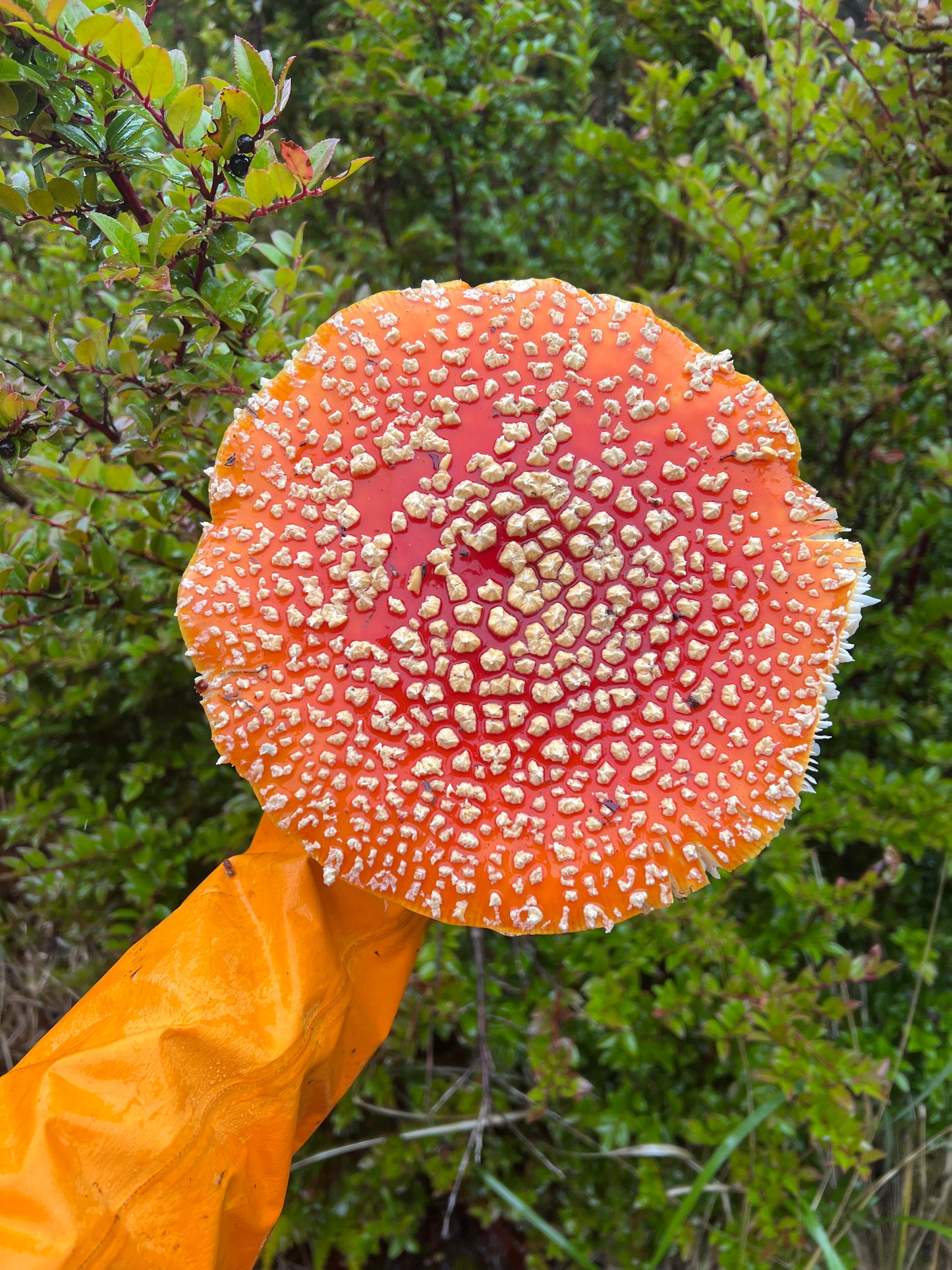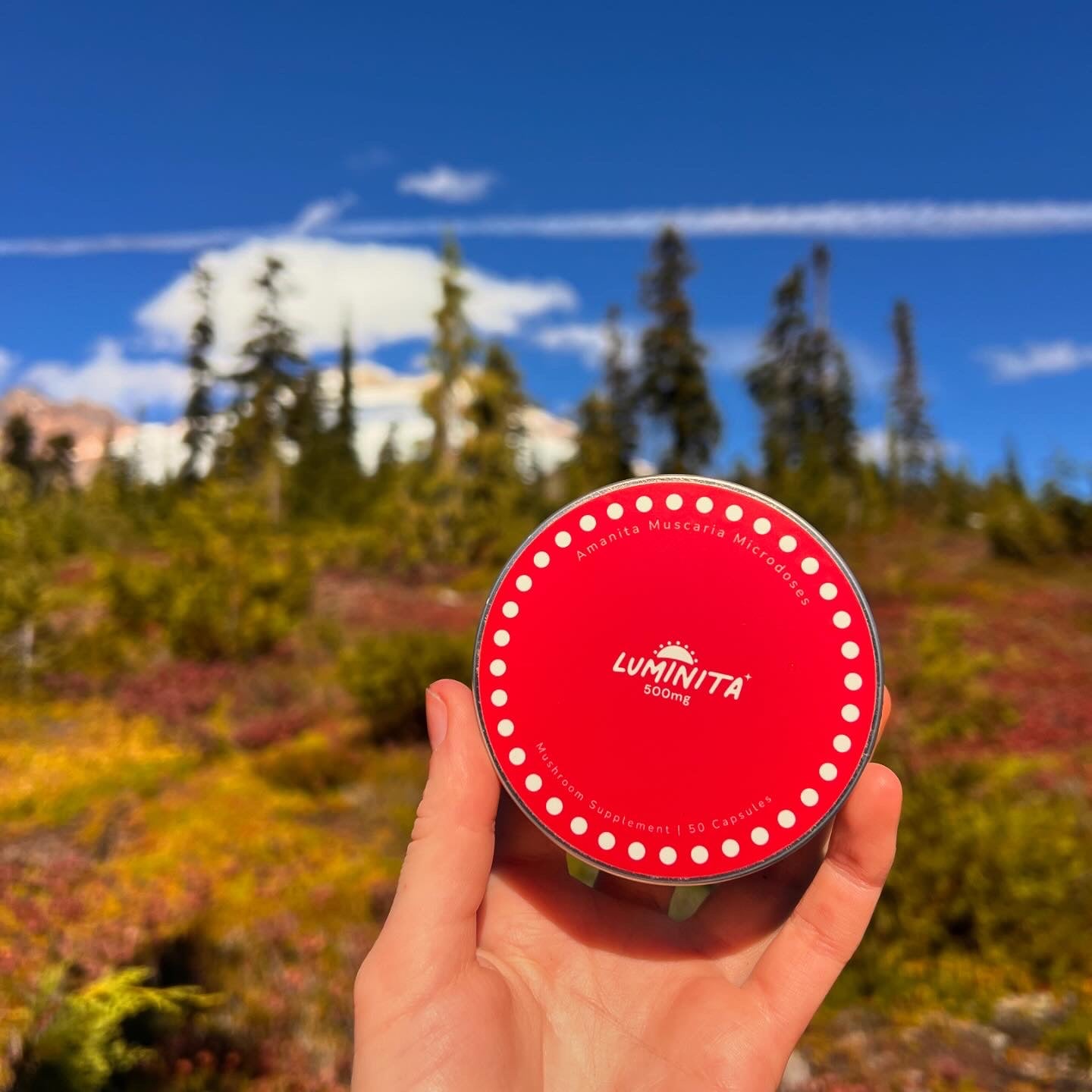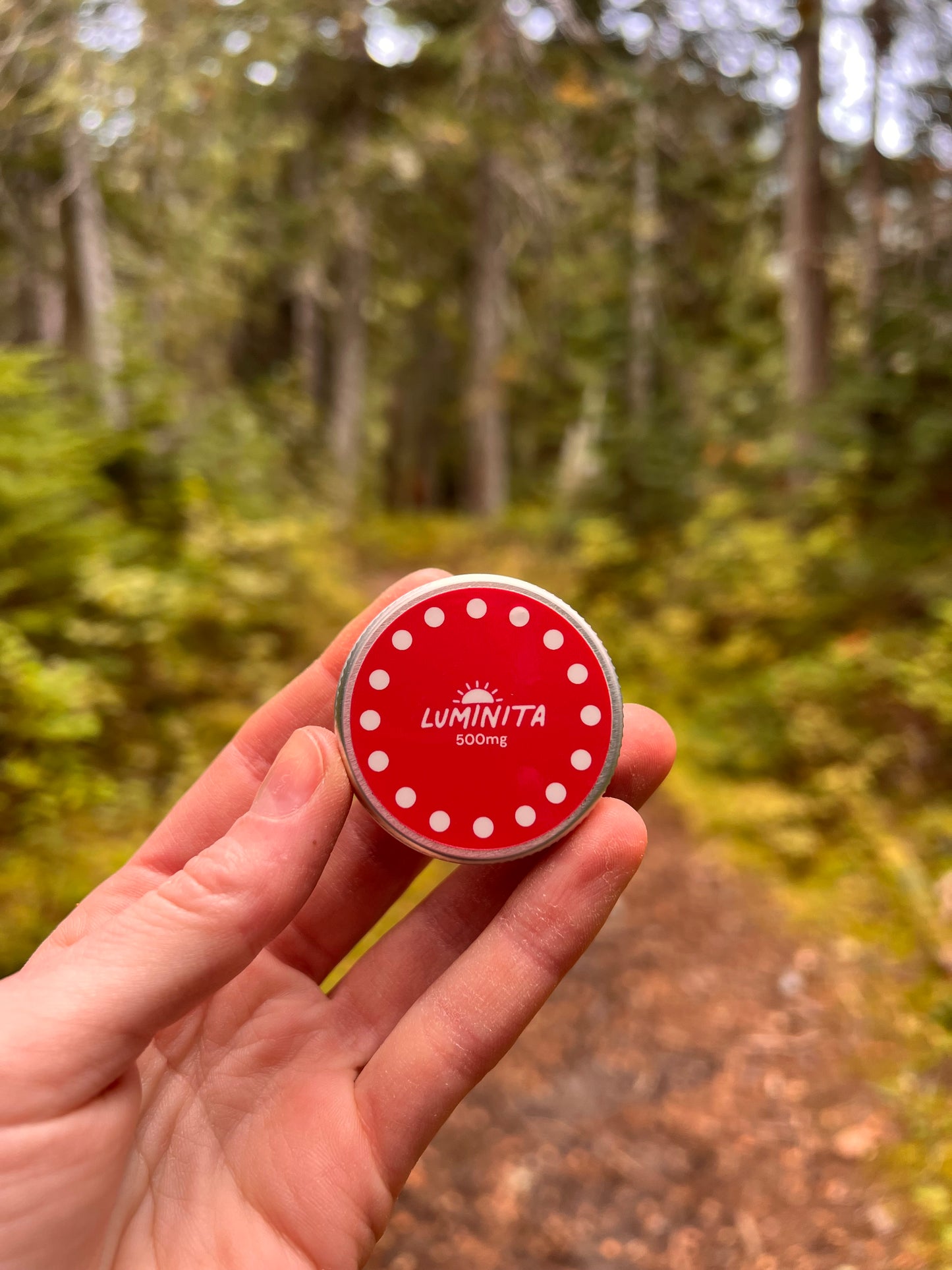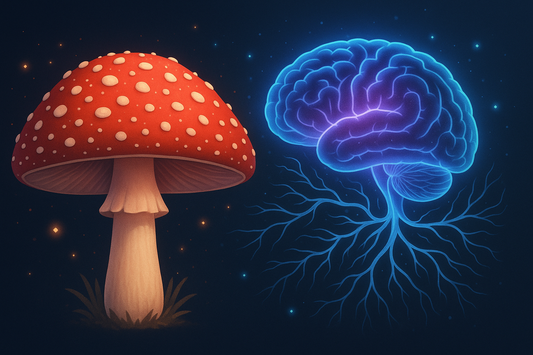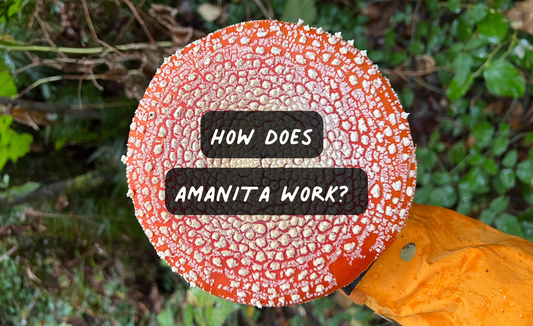Journal Contents:
- What is decarboxylation?
- Why do you want to decarboxylate ibotenic acid?
- What are the effects of these two molecules?
- Why doesn't everyone decarboxylate their mushrooms?
- So how do you decarboxylate Amanita mushrooms?
Let's start with the basics, what is decarboxylation?
Decarboxylation is a simple chemical reaction that results in the loss of a carboxyl group on a chemical structure. The reaction releases the carboxyl group in the form of CO2.
We can also define decarboxylation by breaking down the word:
De = remove
caboxyl = 2 functional groups connected to a carbon
ation = process of
But what’s the point of removing a carboxyl group? Basically, by decarboxylating a chemical you are making an entirely new chemical. In the world of Amanita muscaria, that means you are converting ibotenic acid (C5H6N2O4) to muscimol (C4H6N2O2). Notice the number of carbons (C) goes down by one and the number of Oxygens (O) goes down by 2 (IE: CO2 is removed).
Here’s what this looks like:

Why would you want to decarboxylate ibotenic acid?
When freshly picked, Amanita muscaria mushrooms contain mostly ibotenic acid and very little muscimol. Eaten raw, Amanita mushrooms often lead to nausea, agitation, confusion and potentially vomiting and convulsions. These effects are due almost entirely to ibotenic acid. This is the reason Amanita Muscaria is often labeled as toxic or poisonous in fungi identification books.
Muscimol, on the other hand, is nontoxic has extensive research backing its healing properties. A quick search on google scholar, pulls up 51,600 studies. No small stack of papers.
Therefore, by decarboxylating ibotenic acid into muscimol, we are converting a potentially toxic mushroom into a potentially medicinal one.
Let’s Take a Closer Look: Ibotenic Acid vs Muscimol
Ibotenic Acid:
This is the chemical that is responsible for Amanita’s bad name. Weirdly enough, ibotenic acid has the opposite effect of muscimol. It’s a NMDA agonist, meaning it acts on the NMDA receptor in the brain. By doing this it encourages neurons to fire in the brains. When neurons fire too often, it can causes issues such as cell damage or even dealth.
In several studies, researchers have also found ibotenic acid to be neurotoxic to neuronal cells. In the study, researchers injected ibotenic acid into the hippocampus of rats to see how it affected them. The mice exhibited signs of memory loss and uncoordinated movements.
Muscimol:
This is the chemical that gives Amanita its good name. Its action is as agonist to the GABA receptor. GABA is the major endogenous inhibitory neuron in the brain, meaning it stops the firing of overactive neurons in the brain. When muscimol crosses the blood brain barrier, it acts on GABA cells which then reduce the overactivity of other cells in the brain. In some recent studies, researchers have found that reducing firing of overactive neurons can potentially lengthen your lifespan.
Additionally, because muscimol reduces neuronal firing, this results in some really useful effects. It can:
- quiet an overactive mind
- reduce a sense of fear
- reduce inflammation
- reduce allergy symptoms
- help you fall asleep

Why doesn’t everyone decarboxylate their mushrooms?
There is debate among people familiar with microdosing Amanita muscaria on if you should or should not fully decarboxylate Amanita. Those who are against it argue:
1) The main study claiming ibotenic acid is toxic is unrealistic and is not that harmful when consumed.
In which case you might argue that: yes, this is partially true. The study chose to research the safety of the chemical by experimenting with the worst case scenario (injecting it directly into the brains of rats). Regardless, ibotenic acid is still a NMDA antagonist and several other in vitro (cell based) studies have shown that overexcitation of neurons can cause cell death.
Most would agree its best to avoid something that could cause harm, especially when there are no major benefits to consuming it. Until more research on the toxicity of ibotenic acid on humans comes out, it’s best to avoid consuming it.
2) Ibotenic acid passes through the body untouched.
Again, this is partially true. “About one third of the muscimol and almost all of the ibotenic acid absorbed after mushroom ingestion is excreted unchanged in the urine” Some estimates say its closer to only 10% of muscimol being converted in the body and 90% of ibotenic acid passing through.
This is most likely the reason there are stories of people in Siberia drinking the pee of shamans who drank Amanita muscaria tea, because there was still unconverted ibotenic acid in the pee to consume. It’s also the reason why some people will be fine even when they consume only dried amanita caps (and not fully decarboxylated ones). They are able to feel the effects off the small amount of muscimol they are consuming, and have no issues with ibotenic acid.
However, even if it is true, why not convert all of the ibotenic acid to muscimol and save yourself some money and time foraging. Losing 60-90% of potential muscimol to your pee isn’t worth it if there is a simple way to decarboxylate it beforehand.
Does Dehydrating Mushroom Decarboxylate them?
There are quite a few sellers of Amanita who say that the dehydrated mushrooms they are selling are decarboxylated. While that is partially true, using a dehydrator will only ever decarb about 30% of the ibotenic acid into muscimol.
When higher temperatures are used to decarb more, this leads to burning of the mushrooms which actually breaks down some of the valuable muscimol and other constituents.

Instead, most people dry or buy pre-dried Amanita Muscaria mushrooms and then decarb it later with more sophisticated methods.
How do you decarboxylate Amanita mushrooms?
There are many different methods you can use to help decarboxylate ibotenic acid. Most involve heat, acid or pressure, and sometimes all 3.
The mostly commonly used method to decarb Amanita Muscaria is via a low pH bath or “tea”.
To make this tea you will need a large pot, lemon juice or citric acid, a pH meter (or pH strips) and a straining cloth. Add your dried (or fresh) mushroom to boiling water and then add your acid until it reaches the desired pH level of 2.5-3. Let it boil at that level for 3+ hours and then strain out the mushroom bits.
Although specialized equipment is needed for a perfect 100% decarboxylation, with this method you will have a decarbed batch of Amanita tea. Add this to ice cube trays for easier microdosing and thaw when needed.
A Couple of Tips:
- Every Amanita Muscaria mushroom has wildly varying potencies (up to 5x difference), so it is best to use a large amount of mushrooms in your tea so you have consistent doses.
- Once decarbed, the muscimol has a tendency to degrade quickly and the tea has a short shelf life. Keep your tea in the freezer to preserve it for later.
- Decarbing Amanita mushrooms is a lengthy process and will (no matter if you use a lid or not) cause your apartment/house to fill with the smell of sour mushrooms.
Additionally, there is also another method that involves using a lactobacillus strain of bacteria that has a specific type of enzyme that breaks the molecule down. This is often the method employed by sites that claim to use no acid and or no heat. It's good to note that lactobacillus does not need to be listed on the ingredients by law, and most companies will choose to not disclose it to protect their proprietary process.
Overall, the process for decarboxylation is not too difficult, but can take up a lot of time, make your house/apartment smell of sour mushrooms and give you a final product with a short shelf life.
Instead, save yourself headaches and buy already decarboxylated Amanita Muscaria capsules, like those sold by Luminita.

References:
- Guidebook Picture: Mushrooms of the Pacific Northwest. By Steve Trudeau & Joe Ammirati.


